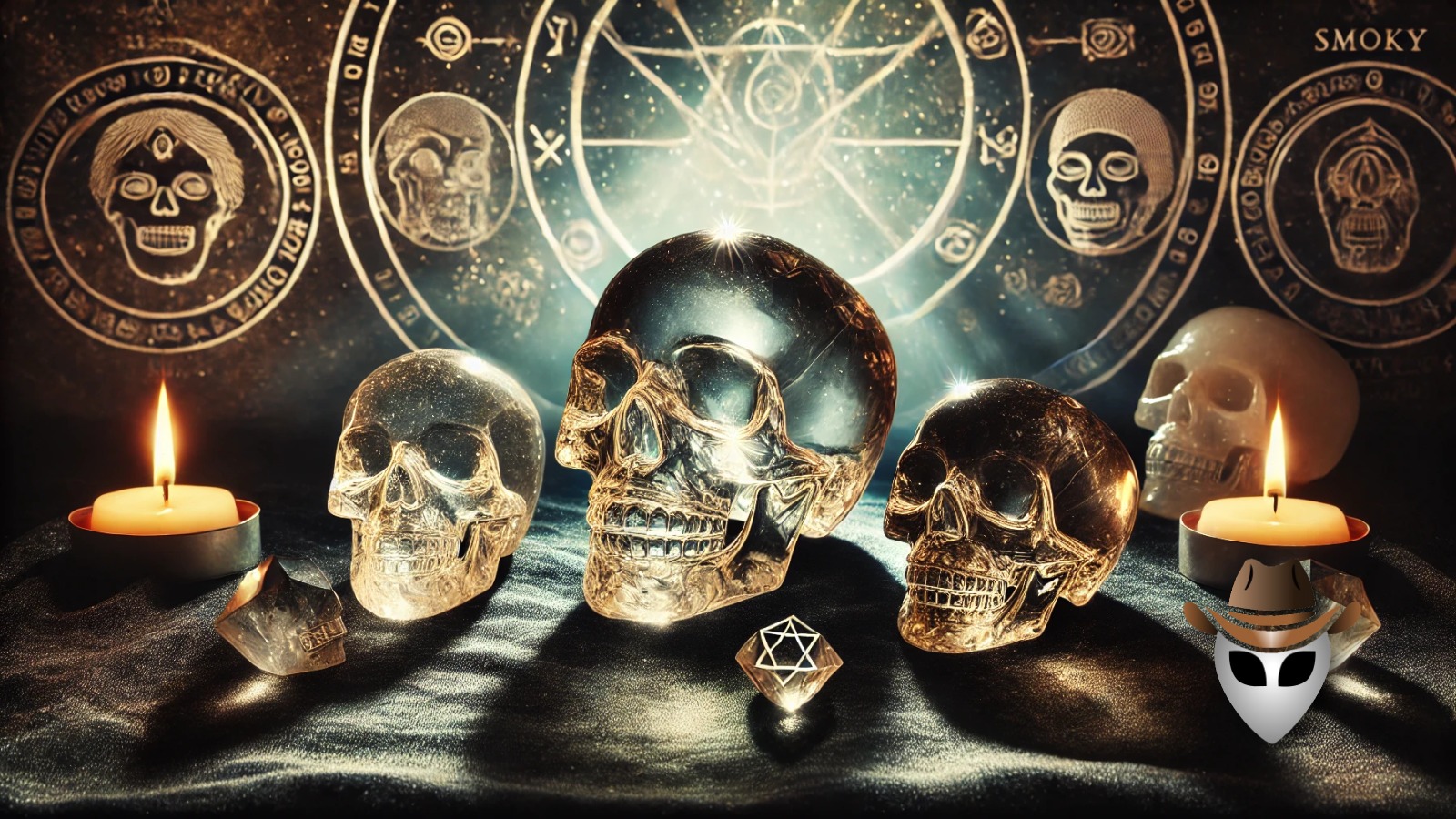Crystal skulls have captivated the imagination of many for decades, often shrouded in mystery and speculation. Believed by some to be ancient artifacts imbued with mystical powers, these intricately carved skulls have sparked debates among archaeologists, historians, and enthusiasts alike. This blog post will explore the evidence both in favor of and against the authenticity and significance of crystal skulls.
The fascination with crystal skulls dates back to the late 19th century when the British antiquities dealer Frederick Mitchell-Hedges claimed to have discovered one in the ruins of a Mayan temple in Belize in 1924. This skull, now known as the “Mitchell-Hedges Skull,” is the most famous of its kind and is often regarded as a symbol of mystery and intrigue (Harris, 2007). According to some beliefs, the skulls are thought to possess healing powers, enhance spiritual energy, and hold the key to ancient knowledge.
Supporters of the phenomenon argue that these artifacts could be remnants of a lost civilization, suggesting that advanced knowledge and skills were possessed by ancient cultures. Some enthusiasts believe that the skulls were used for rituals or as tools for communication with other realms, thus attributing them with extraordinary significance (Peters, 2008).
Evidence in Favor of Crystal Skulls
Cultural Significance: Proponents argue that the indigenous peoples of Central America and other regions revered skulls as sacred objects. Some anthropologists have pointed out that skulls were used in rituals by the Aztecs and other Mesoamerican cultures, potentially giving credence to the idea that crystal skulls served a similar purpose (Harris, 2007).
Mysterious Craftsmanship: The craftsmanship of crystal skulls is often highlighted as evidence of their significance. Many of these skulls are carved from solid quartz and display intricate details, leading some to believe that they could not have been created using the tools available in ancient times. Proponents assert that the precision of the carvings indicates advanced knowledge of crystallography and carving techniques (Peters, 2008).
Alleged Paranormal Activity: Some claim that crystal skulls are capable of emitting energy or consciousness, providing insights into the human experience or the universe itself. Many individuals report having profound experiences when interacting with these artifacts, leading to a belief in their mystical properties (Schoch, 2007).
Evidence Against Crystal Skulls
Despite the allure surrounding crystal skulls, significant skepticism exists regarding their authenticity and origins.
Questionable Provenance: Many of the crystal skulls on display in museums, including the British Museum and the Smithsonian Institution, have been proven to be modern creations. For example, the skulls in the British Museum were revealed to have been made in the late 19th century using industrial tools, which contradicts claims of ancient origins (Peters, 2008). The lack of verifiable archaeological evidence further weakens the case for the skulls being authentic artifacts.
Scientific Analysis: Scientists have conducted various analyses on crystal skulls, particularly the Mitchell-Hedges Skull. Tests have shown that the skull was likely produced using modern techniques, including the use of tools that would not have existed in ancient Mesoamerican cultures (Harris, 2007). The materials used in some of these skulls, such as synthetic resin, further challenge claims of their antiquity.
Skepticism from Experts: Many archaeologists and historians dismiss the notion that crystal skulls possess any special properties. For instance, they argue that the mystical interpretations often stem from pseudoscience rather than rigorous research. Experts emphasize the importance of grounding interpretations of ancient artifacts in historical context and scientific evidence (Schoch, 2007).
Crystal skulls continue to fascinate people across the globe, standing at the intersection of myth, culture, and pseudoscience. While proponents highlight their cultural significance, craftsmanship, and alleged mystical properties, skeptics challenge their authenticity, arguing that many have been proven to be modern creations.
Ultimately, the truth behind crystal skulls remains elusive, intertwining ancient lore with contemporary curiosity. As more research is conducted, the story of these enigmatic artifacts continues to unfold, captivating both believers and skeptics alike. Whether viewed as genuine remnants of ancient wisdom or elaborate hoaxes, crystal skulls will likely remain a topic of intrigue for years to come.
Share Your Thoughts on the Crystal Skulls!
What do you think? Are the crystal skulls an ancient mystery or a modern hoax? Share your thoughts in the comments below!
